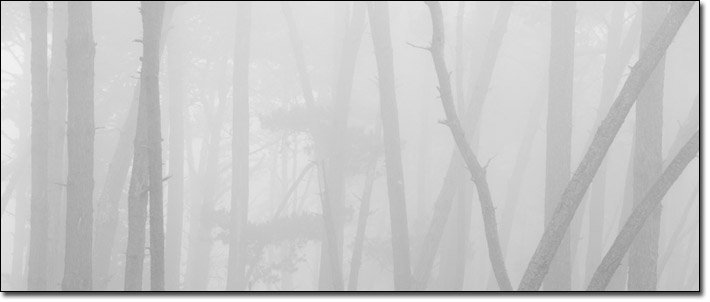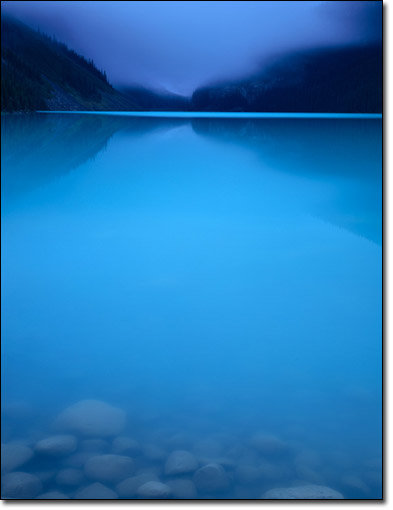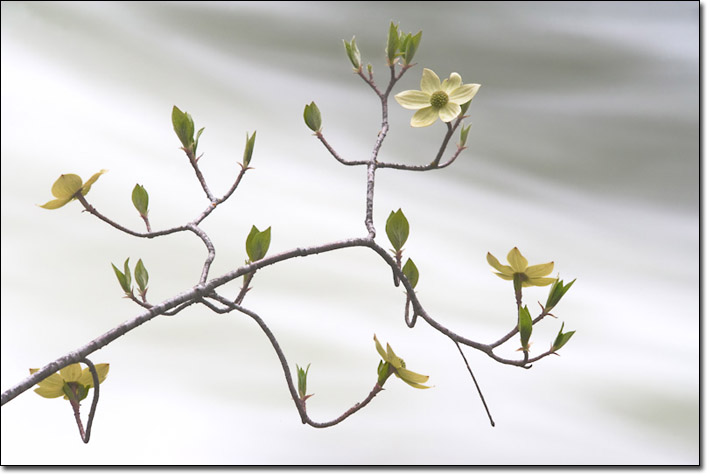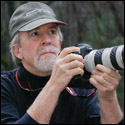Ten Questions: An Interview With William Neill |
NPN Editor-in-Chief, Richard Bernabe recently interviewed William Neill, an award-winning landscape and nature photographer and columnist for Outdoor Photographer magazine, for the first in a continuing series of photographer interviews to appear in the coming months. We hope you enjoy this new feature.
Welcome to Nature Photographers Online Magazine, Bill, and thanks for taking the time to answer a few questions for our readers. As a way to introduce yourself to the NPN community, please begin by telling us how you got your start as a professional nature and landscape photographer.
When I was growing up, my family often visited National Parks during summer vacations. Then during college, I ended up working in Glacier and North Cascades National Parks on my summer breaks. I started backpacking on my days off, and carried a cheap camera to record my explorations. I enjoyed sharing snapshots of all the beauty I had seen, from mountain lakes, fields of flowers and vistas from the peaks that I climbed. I enjoyed the photographic process enough to take courses from the Art Department at the University of Colorado, where I was studying for my degree in Environmental Conservation. After college, I moved to Yosemite to work for the National Park Service. In 1980, I was hired as the staff photographer at The Ansel Adams Gallery. During my five years working there, I learned a great deal about both the art and business of becoming a full-time photographer. I’ve been happily self-employed since leaving that job.
Who or what were the sources of inspiration during your formative years? What are they now?
When I studied photography in Boulder, I learned about master photographers such as Edward Weston, Minor White and Wynn Bullock. These photographers inspired me, as well as the work of Ansel Adams and Paul Caponigro. Other major influences were Eliot Porter, Ernst Haas and Philip Hyde. The Sierra Club Exhibit Format series of books, edited by David Brower, inspired me with their images and strong message of wilderness preservation. My artistic inspirations, then as now, range from impressionistic painters to Black and White large format master like Ansel.

Forest Fog, Monterey California, California 2009
Your work obviously shows a love for nature and the landscapes you capture. Why did you choose photography as your preferred method of expression? Why not painting or writing or poetry?
Perhaps laziness? Seriously, I tried painting when I worked in Glacier NP, but I didn't have the skill or the patience to do it well. When hiking around in the high mountains, it was relatively easy to haul a camera along. So at first, I chose the camera due to expediency and portability!
In the photographer's statement on your website, you remark that what you seek are images that "rely on emotional response and perception rather than the spectacle of the scene." Your images, it seems, are consistently true to that ideal. When you have a favorable scene in front of you, how do you distill the emotional from the literal?
I think that my approach has a lot to do with a distillation process. First, I look for parts of a landscape that amaze me. As a passionate observer of nature, the subject needs to speak to me. Rather than trying to capture the whole, broad view, I look for that special aspect, like a glint of light or a rhythmic pattern of tree trunks that transforms the ordinary into the extraordinary, as Dewitt Jones would say. Although there may be many special aspects of a wide view, too much information dilutes their impact. It is the isolated details and nuances to which I most often strongly respond. That emotional response is always there when I make the image, but it is fairly rare to have it translate in the final photograph. So many factors need to come together for the magic to happen, both technically and creatively. For every ten or twenty subjects that thrill me in the field, only one or two might work artistically.

Dawn, Lake Louise, Banff National Park, Canada 1995
As a photographer who seeks emotionally evocative images, how long does it take to establish an emotional connection to a new place you've just visited?
Sometimes it takes many trips to a location to "see" an image that goes beyond the cliché. Having lived in the Yosemite area for so many years, I have learned approaches that help me "distill" a subject or a scene to its core essence, or for me to come across that magic light that "completes" a composition. The skills honed in Yosemite have served me well in other locations, even those new to me.
Aside from Yosemite, a place with which you obviously have a special and emotional connection, where would you go if forced to choose a location to photograph exclusively for the remainder of your life and why?
Death Valley and Big Sur are also magical landscapes to me. The east side of the Sierra Nevada Mountains also draw me back again and again. So if I lived on the East Side, say in Bishop, I would have easy access to both the Sierra and Death Valley.
What's the biggest change you've seen in this business over the past 10 years? Have you fully embraced the Internet and social networking for marketing your work?
The digital revolution is certainly the biggest change to me - digital printing and capture plus the internet has made high quality imagery possible for so many that the field has been flooded. In part, this easy access has crashed the photo stock market. I encourage photographers new to this field to educate themselves about the industry, about properly pricing their photography.
I have had my WilliamNeill.com website for about fifteen years, and the entire site was updated last year. In the last several years, I have been posting to my Light on the Landscape blog, including most of my latest images. I have also built up a good following on my Facebook page and on Twitter. The social networking has helped me introduce my work to a new audience, and share new images with my online friends.

Dogwood blooming, Yosemite National Park, California 2005
When did you make the switch from film to digital? What challenges did you face during the transition and what, if any, challenges do you encounter still?
I started printing digitally, from film scans, in 1993 when Evercolor pioneered commercial digital printing, most notably with the use of a Lightjet printer and Fuji Crystal Archive paper. I currently make my fine art prints on high-end Canon inkjet printers.
I transitioned from film, mostly 4x5, to digital capture in 2005 with the advent of the Canon 1DS series cameras. I was already printing digitally, and using Photoshop on drummed scanned 4x5 film. Because of this gradual transition, I did not find it difficult. The main challenge has been to keep up with the latest software and other technologies, while continuing to develop the skills needed to make use of them.
What piece of gear or gadget could you not do without?
My most used lens is a Canon 70-200mm f/2.8 lens. I could not do without a good telephoto zoom, since I like extracting details from the landscape. The other lens I use most often is my Canon 90mm Tilt-Shift. Having used a 4x5 camera for 20 years, this lens is a natural for me. I often put a 2x tele-extender on that lens for a 180mm lens that I can tilt forward for depth of field control.
If you were not a professional nature photographer, what do you think you would be doing today?
I think I would be a painter or a graphic designer. I love the process of designing elements within a frame, working with the flow of lines, color relationships and the relationships of objects. This is a vital part of my photography, and I feel that this would carry over to other visual outlets. You can see my photographic "paintings" in my Impressions of Light portfolio.
Comments on NPN nature photographer interviews? Send them to the editor. NPN members may also log in and leave their comments below.
 William Neill, a resident of the Yosemite National Park area since 1977, is a landscape photographer concerned with conveying the deep, spiritual beauty he sees and feels in Nature. Neill's award-winning photography has been widely published in books, magazines, calendars, posters, and his limited-edition prints have been collected and exhibited in museums and galleries nationally, including the Museum of Fine Art Boston, Santa Barbara Museum of Art, The Vernon Collection, and The Polaroid Collection. Neill received a BA degree in Environmental Conservation at the University of Colorado. In 1995, Neill received the Sierra Club's Ansel Adams Award for conservation photography.
William Neill, a resident of the Yosemite National Park area since 1977, is a landscape photographer concerned with conveying the deep, spiritual beauty he sees and feels in Nature. Neill's award-winning photography has been widely published in books, magazines, calendars, posters, and his limited-edition prints have been collected and exhibited in museums and galleries nationally, including the Museum of Fine Art Boston, Santa Barbara Museum of Art, The Vernon Collection, and The Polaroid Collection. Neill received a BA degree in Environmental Conservation at the University of Colorado. In 1995, Neill received the Sierra Club's Ansel Adams Award for conservation photography.
His collection of ebooks are available for download on his website, WilliamNeill.com and blog, Light on the Landscape. He also offers one-on-one workshops in his studio office near Yosemite National Park.